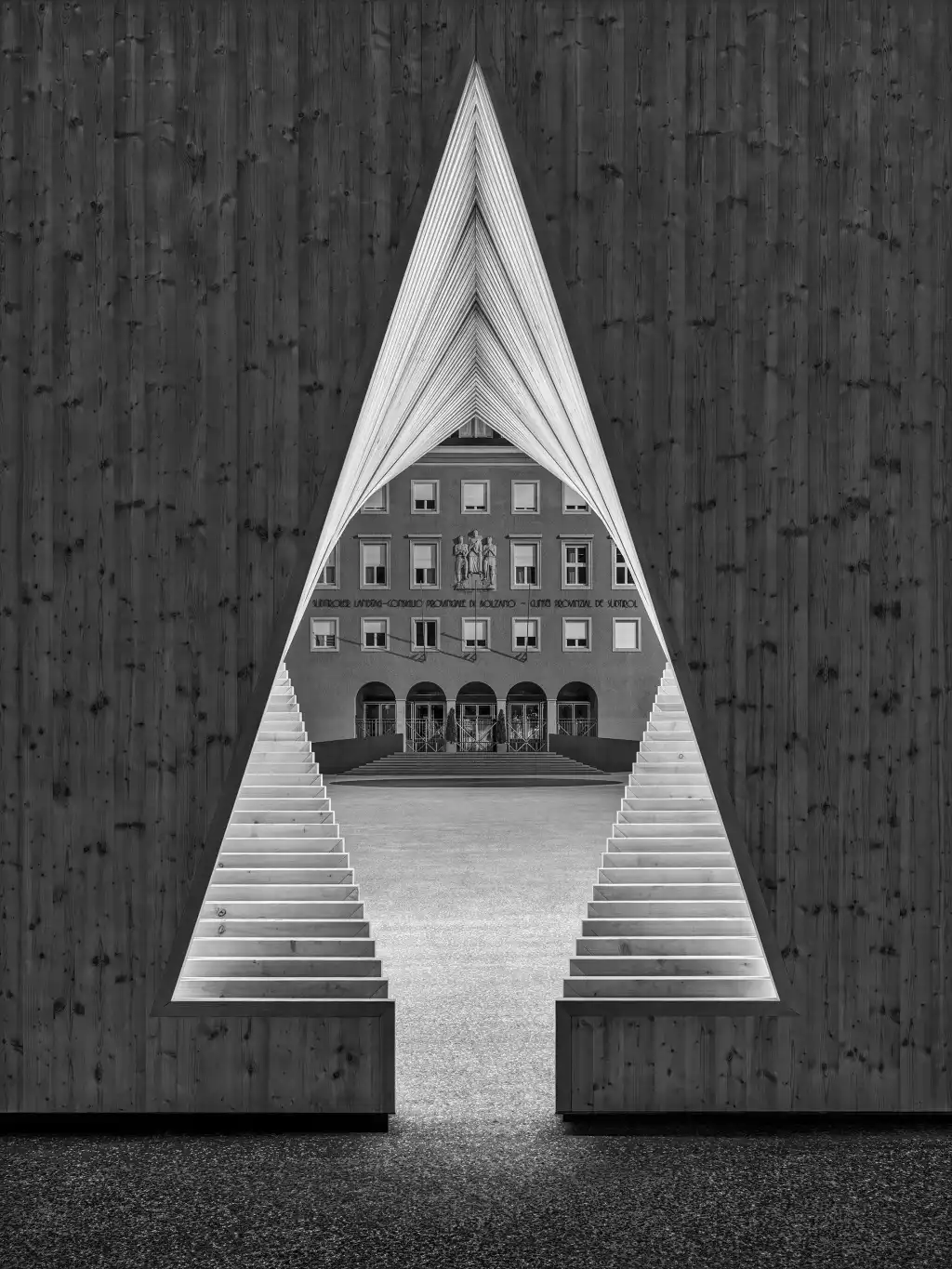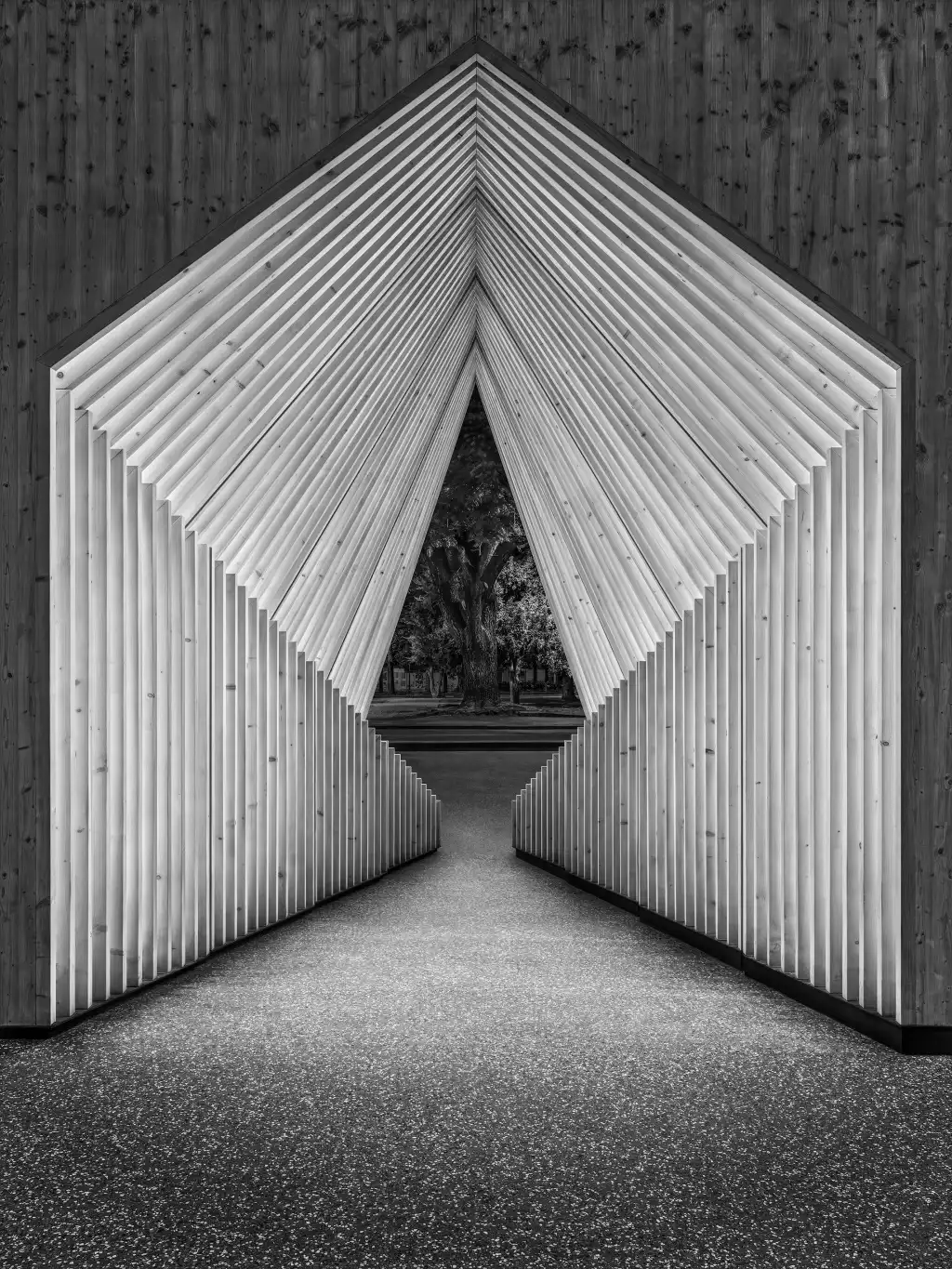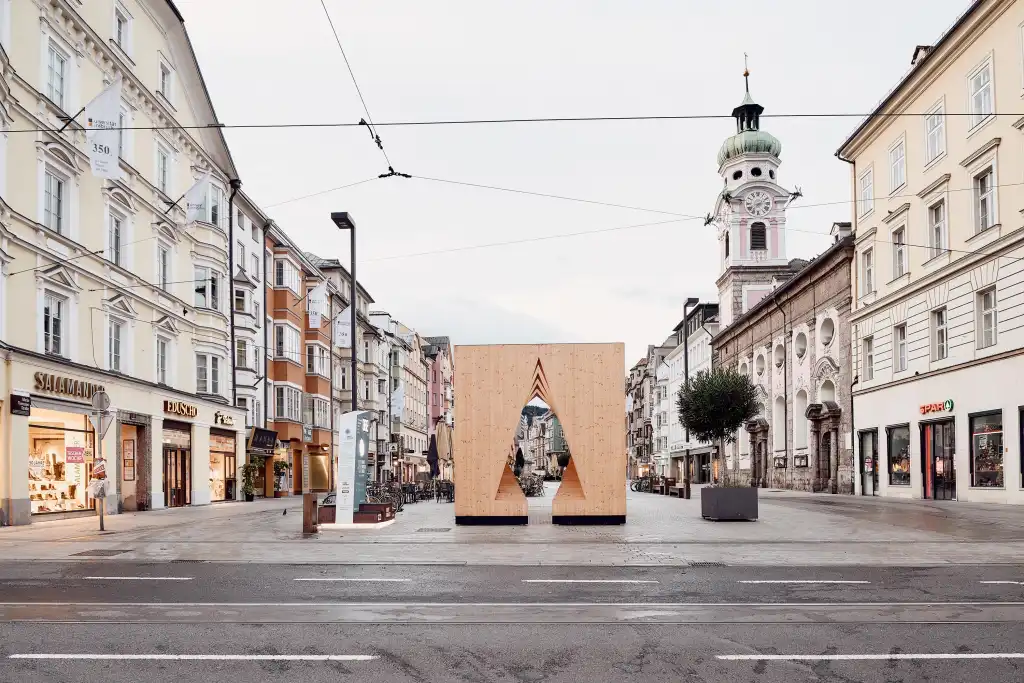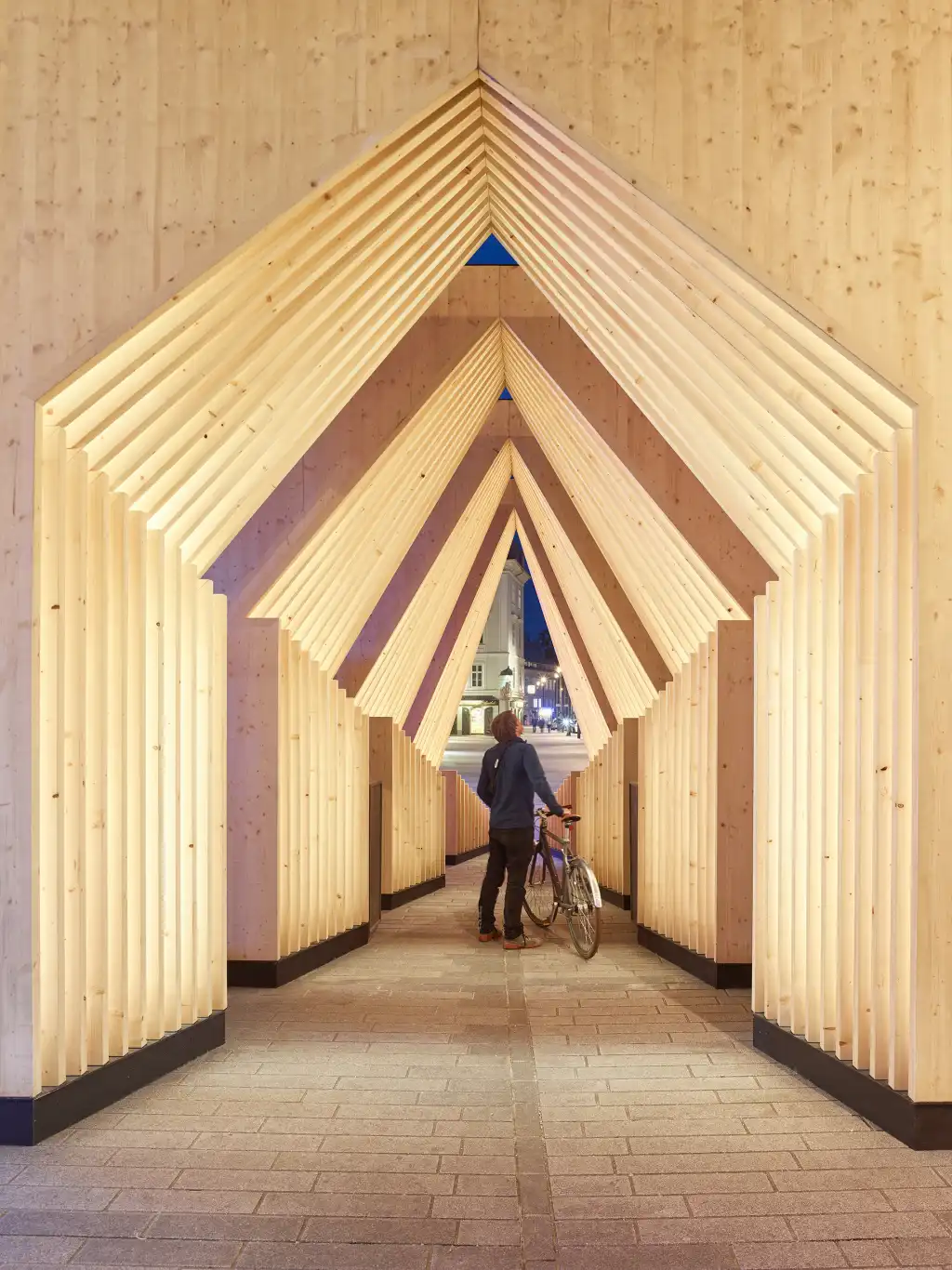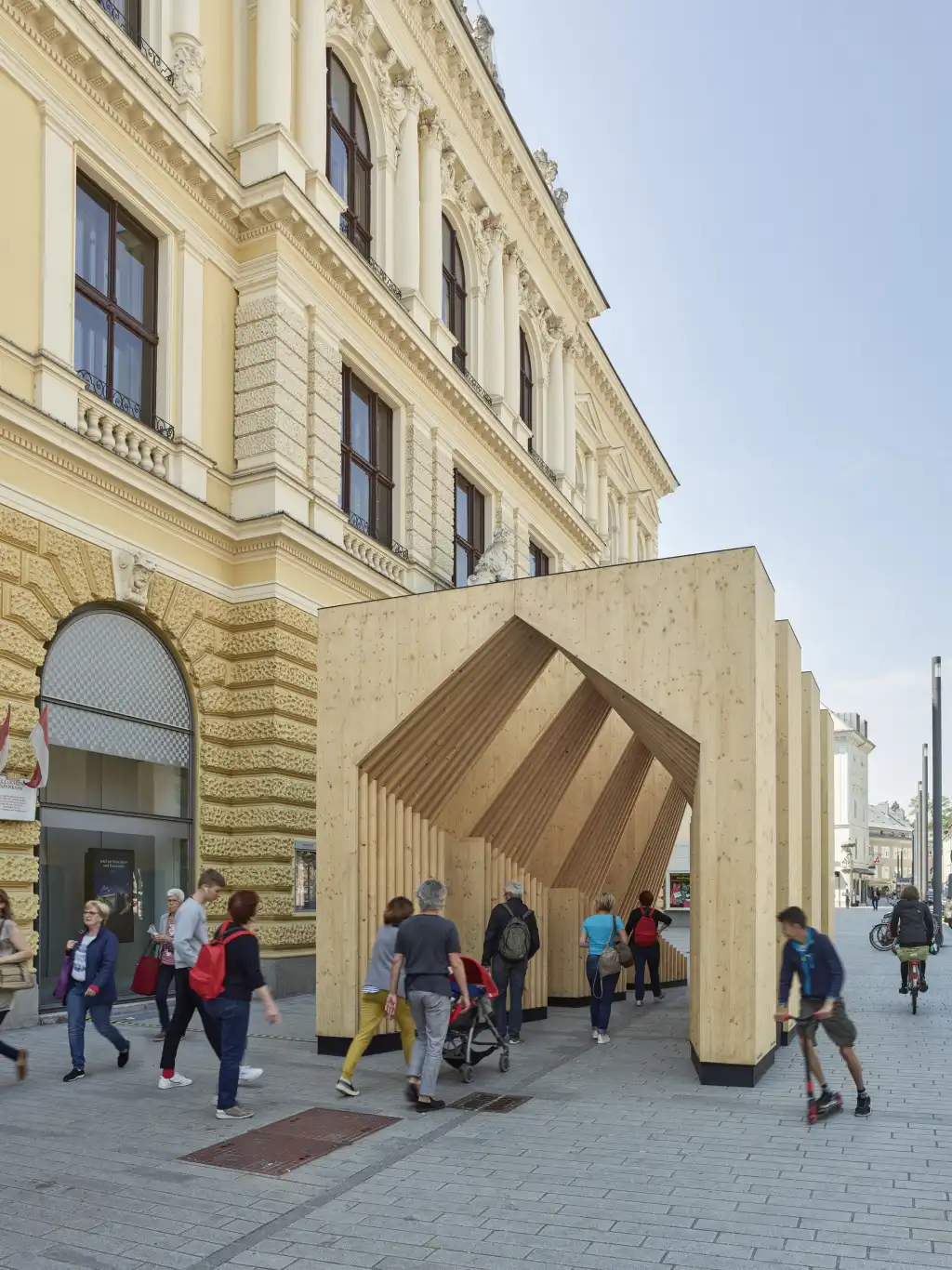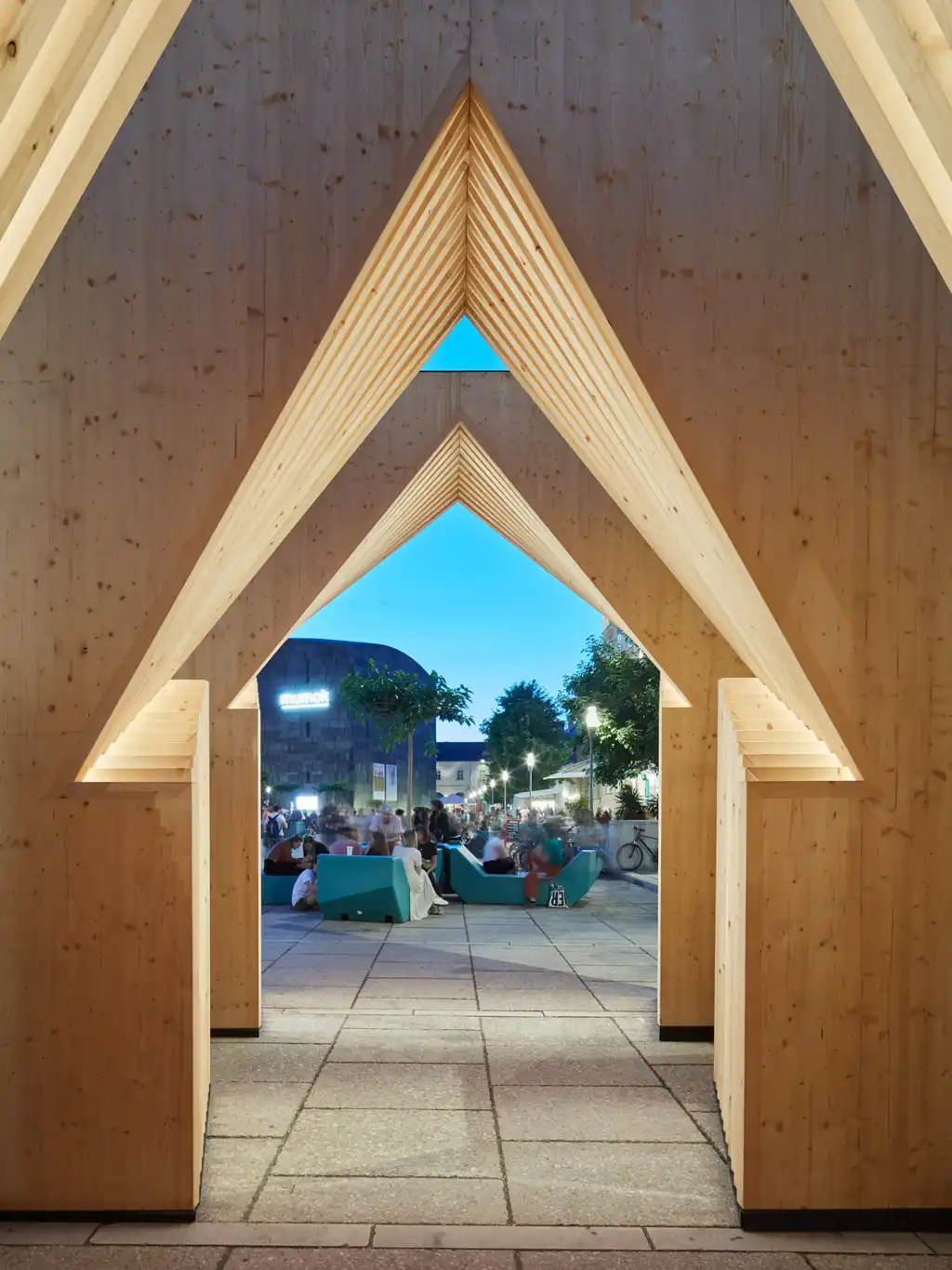87
Woodpassage
From tree to house
| Title | Woodpassage |
|---|---|
| Year | 2019 |
| Client | proHolz Austria proHolz Bayern Lignum Schweiz |
| Production | Fetz Holzbau GmbH, Egg; Mader Werbetechnik, Lauterach |
| Planning | TU München Hermann Kaufmann, Maren Kohaus |
| Awards | Vorarlberger Holzbaupreis, Iconic Awards, Innovative Architecture |
A tree grows in the forest – wood comes from the tree – and the wood becomes a house. The wooden “woodpassage” sculpture placed outdoors in the centre of Europe exemplifies this process. With simple pictographic symbols over forty stages, it conveys the transformation from fir to house. This conversion is shown by the Atelier Andrea Gassner as cuts out of large blocks of wood, cut by cut.
The result is a sensory experience; consisting of four wooden gates, 4.32 m wide, 4.32 m high and 8.65 m long, the “woodpassage” expresses a strong three-dimensional message when viewed from afar. Whilst strolling through the cheerfully illuminated passage, it becomes playful ambassador for the ecological advantages of timber construction.
*From tree to house!*
Experience the walk-in installation.
An initiative of proHolz Austria, proHolz Bavaria, Lignum Switzerland
*Forests create a good climate and the resource wood.*
Through sustainable management, forestry ensures the forest habitat and the availability of wood. The forest area in Europe grows by 1,500 soccer fields every day. Only 2/3 of the growth are actually used.
*Wood is available and offers a chance to change resource use.*
The construction sector accounts for around 40% of all resources. The use of building products made from renewable raw materials saves and secures resources for the future. About 13 cubic meters of wood were needed for the construction of these 4 gates. This amount grows back in Europe’s forests in 1/2 a second.
*Building with wood protects our climate.*
The photosynthesis of the trees binds 1 ton of CO2 in 1 cubic meter of wood. Timber buildings extend carbon storage capacity and thus relieve the climate in a sustainable way. About 13 tons of CO2 are permanently bound in the wood of these 4 gates. This corresponds to the pollutant emissions of a passenger car over 8 years.
